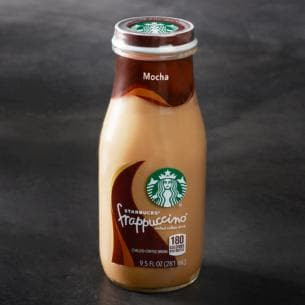It is at the
intersection of brand development and brand growth the food industry leaders need
to pay attention to the blance of employees and customers. Steven Johnson, Grocerant
Guru® at Tacoma, WA based Foodservice
Solutions®, stated, “Starbucks once
a leader in employees and customer messaging now looks more like a company
wanting to go backward rather than forward.”
Starbucks once read the pulse of its
employees better than any company within the retail food space. Longing for a bygone
era, the new Interim CEO of Starbucks, new tone is to punish, punitive, and
pushing employees backward, reinforcing all the foodservice employer /
employees stereotypes he spent decades bemoaning.
The team at
Foodservice Solutions® recommends that the Interim Starbucks CEO leave the office, spend 6
weeks in Buffalo, NY paying rent, power & water, phone, cable on 36 hours a
week at any Coffee shop. After 6 weeks
with no extra money to spend he just might have some valued insights to share with
the leadership of his company.
Hiring lawyers,
sending out PR that is example of what at one time he had distain for does not
reflect the actions of a leader for today, rather it reflects what once was
bad, and continues to be a bad example, bad for the industry, and bad for the
future of Starbucks. Has your company lost
touch with its employees and customers?
All grocerant niche Ready-2-Eat and
Heat-N-Eat fresh food retailers should strive to know their customer lifetime
value (CLV), a metric that is immensely useful as it can help businesses predict
how much customers are likely to spend in the future, and can help them
make informed decisions regarding customer acquisition and retention. The
same holds true for employee lifetime value (ELV).
It is at the intersection of ELV and CLV that
success begins. It’s that intersection enables
businesses to understand customers as individuals, and employees as assets, not
just as a broad group. The difference may seem small, but is significant. A
customer who buys coffee twice a week is "fundamentally different"
than an every-two-weeks coffee buyer, an employee that services that
customer twice a week is "fundamentally different".
"We know not all customers are
created equal," Sheculsky said, noting that one customer may visit
once a week, while another will only come in when they are lured by a coupon.
Artificial intelligence (AI) can be used
to calculate CLV and understand a customer's habits much more accurately,
particularly as part of a loyalty program.
The use of "AI to IA"
predictive insights — artificial intelligence to individual actions — can
estimate an individual customer's likelihood to interact with a brand, when
they make a store visit, when they don't, what day of the week is better for
them to receive a loyalty program message, and much more. Building out such
profiles is part of understanding their lifetime value, Sheculsky said.
AI can also calculate specific, important
aspects of someone's CLV, including:
·
Recency: How long has the person been in the loyalty program?
·
Frequency: What does the average visit cadence look like?
·
Latency: When was the most recent visit?
·
Spend: How much do they spend, on average, per visit?
·
Predicted future value: How long is this person likely to remain active?
After building a customer's profile using
these factors, retailers can plan for how best to communicate with them and
motivate them to come back for another visit.
In a Battle for Share of Stomach
Do you look more like
Yesterday or Tomorrow
In general, the ratio of CLV to the cost
to acquire that customer should be around 3:1. But even if a business sets a
different target, the ratio is a good way of understanding their marketing
spend. Once a baseline is established, there are a number of ways to use CLV to
achieve better programs. Retailers can identify their most valuable customers,
see what it takes to increase the CLV of lower-value customers, effectively
segment customers into groups for future campaigns, optimize acquisitions, and
realize lift.
Another potential benefit of CLV is
reducing the cost to acquire a customer. According to Sheculsky, there are
three key ways to achieve this:
1. Retaining customers longer: Customers
can be retained longer and turned from lapsed customers into current ones
through targeted 1:1 win-back campaigns based on their profiles. For example,
AI can calculate three dates for the base time to reach out to them based on
their demographics and specific past behavior.
2. Reducing media/advertising expenses: Media/advertising spend can be reduced by using loyalty
intelligence to inform media buys and identify those customers who are most
likely to make a store visit.
3. Reduce fees associated with third-party marketplaces: Retailers that know more about their customers and have the right
data can push first-party ordering, especially if they offer a smooth online
ordering experience.
The
same hold true for employees. Think
about looking forward, don’t hold onto yesterday to long.
Foodservice
Solutions® team is here to help you drive top line sales and bottom-line
profits. Are you looking a customer ahead? Does your messaging look more like
yesterday that tomorrow? Visit GrocerantGuru.com for more information
or contact: Steve@FoodserviceSolutions.us Remember success
does leave clues and we just may the clue you need to propel your continued
success.






No comments:
Post a Comment